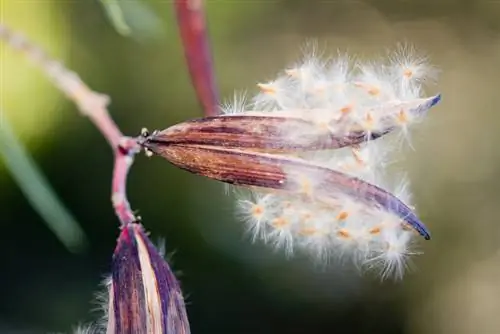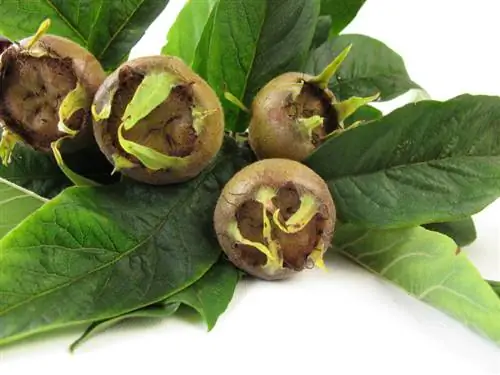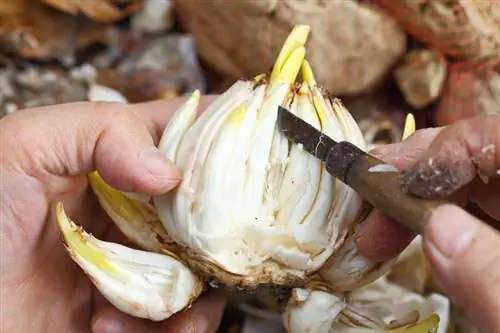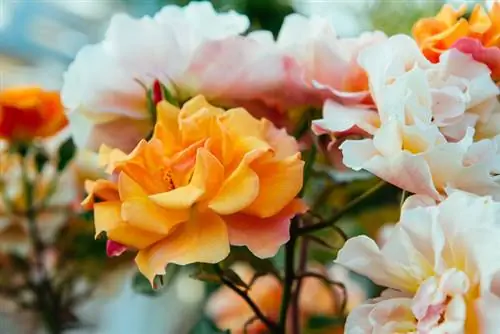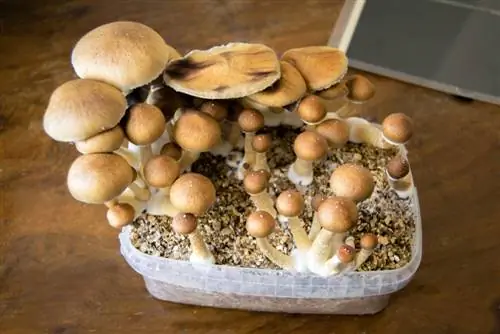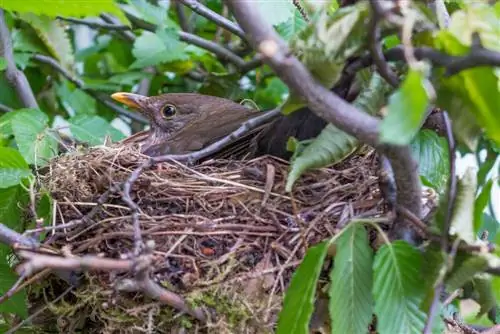- Author admin [email protected].
- Public 2023-12-16 16:46.
- Last modified 2025-01-23 11:20.
Oleanders are a tireless flowering plant: in good conditions - i.e. warm and sunny weather - the shrub blooms with numerous delicate flowers between May and October. Like every flower-producing plant, the oleander naturally strives to produce seed pods and thus reproduce. The hobby breeder can exploit this property both for propagation and for breeding their own varieties.
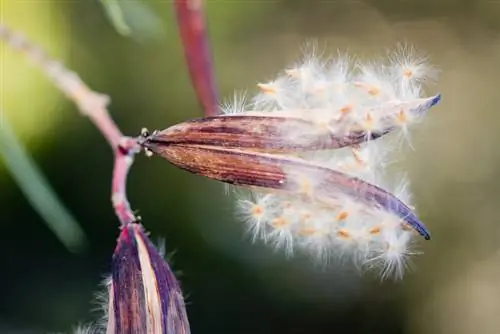
How do oleander pods form and develop?
Oleander pods are created by fertilization of hermaphrodite flowers, often by insects or artificially with a brush. They ripen in plenty of sun and warmth and burst open along the length, releasing brownish, umbrella-like seeds that can be used for propagation.
Fertilizing oleander flowers
But before the oleander can produce fruit, the flowers must first be fertilized. The flowers of the plant are hermaphrodite, i.e. H. both female and male. Theoretically, self-fertilization is possible, but it is more likely when two different oleanders exchange genetic information - this is also necessary, for example, to obtain new varieties. Fertilization is usually carried out via animals or insects, but the hobby breeder can also carry out this task by hand. All you need is a brush with which you can transfer pollen from one flower to another immediately after opening the flower buds.
Create good conditions for the pods to ripen
The formation of the pods will not be successful every summer, because the oleander needs a lot of sun and warmth. In rather cool and rainy summers, the flowers may fail. In addition, the seed pods usually take a long time to mature - German summers are often too short for this process. However, you can artificially extend the warm season by moving the oleander to a warm and bright winter garden - don't forget to install additional plant lamps. The pods are ready to harvest as soon as they turn brown and split open along the length.
Collecting and sowing seeds
The brownish seeds it contains have umbrellas - similar to dandelion seeds - because oleander seeds are distributed in the area with the help of the wind. However, you remove the seeds from the pods and proceed as follows:
- Soak the seeds in lukewarm water overnight.
- Then sow them in a shallow growing tray with fresh, low-nutrient growing substrate.
- A substrate based on coconut fibers (€23.00 on Amazon) is ideal for this purpose.
- Moisturize seeds and substrate
- and keep both moist over the next few weeks.
- Cover the bowl with cling film to increase the humidity.
- Place the seed tray in a bright and warm place.
The seeds will germinate within a few weeks if all goes well.
Tip
Keep in mind that the formation of the plant's pods requires a lot of energy, which in turn is at the expense of flower formation.

